- Arthritis of the Shoulder
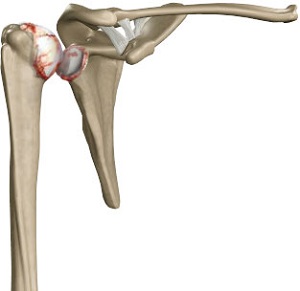
There are over 100 different types of arthritis. The most common are osteoarthritis and rheumatoid arthritis.
Know More - Shoulder Pain

Pain in the shoulder may suggest an injury, which is more common in athletes participating in sports such as swimming, tennis, pitching, and weightlifting. The injuries are caused due to the over usage or repetitive motion of the arms.
Know More Launch Movie - Shoulder Fracture
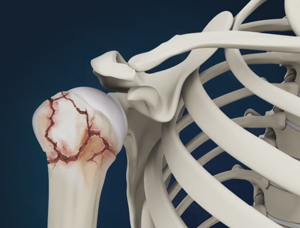
A break in a bone that makes up the shoulder joint is called a shoulder fracture.
Know More - Clavicle Fracture

The break or fracture of the clavicle (collarbone) is a common sports injury associated with contact sports such as football and martial arts, as well as impact sports such as motor racing.
Know More Launch Movie - Rotator Cuff Tear

A rotator cuff is a group of tendons in the shoulder joint that provides support and enables a wide range of motion.
Know More Launch Movie - SLAP Tears

The term SLAP (superior –labrum anterior-posterior) lesion or SLAP tear refers to an injury of the superior labrum of the shoulder.
Know More - Shoulder Labral Tear
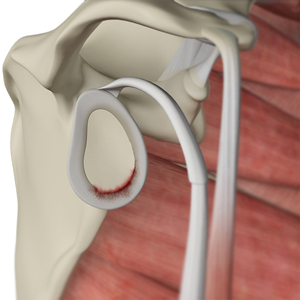
Traumatic injury to the shoulder or overuse of the shoulder (throwing, weightlifting) may cause the labrum to tear. In addition, aging may weaken the labrum leading to injury.
Know More - Shoulder Instability

Shoulder instability is a chronic condition that causes frequent dislocation of the shoulder joint.
Know More Launch Movie - Fracture of the Shoulder Blade (Scapula)
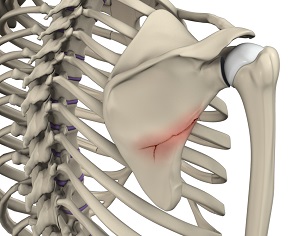
The scapula (shoulder blade) is a flat, triangular bone providing attachment to the muscles of the back, neck, chest and arm. The scapula has a body, neck and spine portion.
Know More - Shoulder Trauma
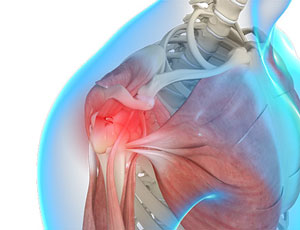
Shoulder injuries most commonly occur in athletes participating in sports such as swimming, tennis, pitching, and weightlifting. The injuries are caused due to the over usage or repetitive motion of the arms.
Know More - Frozen Shoulder

Frozen shoulder, also called adhesive capsulitis, is a condition in which you experience pain and stiffness in your shoulder. The symptoms appear slowly, worsen gradually and usually take one to three years to resolve on their own.
Know More Launch Movie - Shoulder Dislocation

Sports that involve overhead movements and repeated use of the shoulder at your workplace may lead to sliding of the upper arm bone from the glenoid.
Know More - Shoulder Disorders
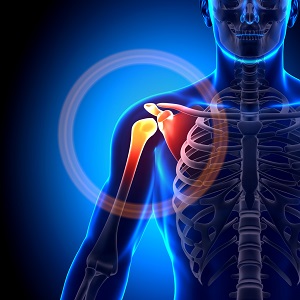
The shoulder is the most flexible joint in the body that enables a wide range of movements. Aging, trauma or sports activities can cause injuries and disorders that can range from minor sprains or strains to severe shoulder trauma.
Know More - Bicep Tendon Rupture
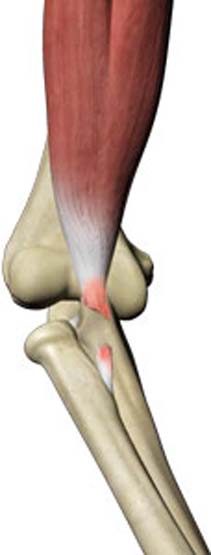
The biceps muscle is located in the front side of your upper arm and functions to help you bend and rotate your arm.
Know More - Acromioclavicular (AC) Arthritis
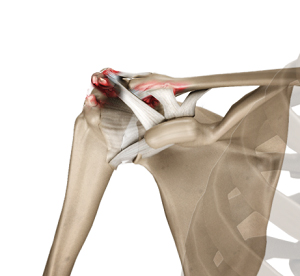
The acromioclavicular joint is part of the shoulder joint. It is formed by the union of the acromion, a bony process of the shoulder blade, and the outer end of the collar bone or clavicle.
Know More - Shoulder Impingement

Shoulder impingement is the inflammation of the tendons of the shoulder joint. It is one of the most common causes of pain in the shoulder. Shoulder impingement is also called swimmer’s shoulder, tennis shoulder or rotator cuff tendinitis.
Know More - AC Joint Dislocation/Acromioclavicular Joint Dislocation
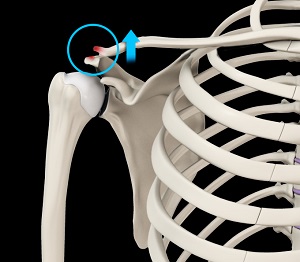
A dislocation occurs when the ends of your bones are partially or completely moved out of their normal position in a joint. A partial dislocation is referred to as a subluxation, whereas a complete separation is referred to as a dislocation.
Know More - Distal Biceps Injuries
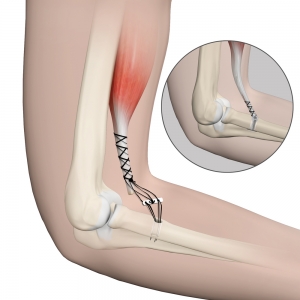
The biceps is a large muscle present in front of the upper arm, extending from the shoulder joint to the elbow.
Know More - Glenoid Fractures
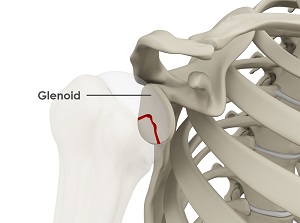
Fractures of the glenoid are rare but can occur due to major trauma or during high-energy sports activities.
Know More - Posterior Shoulder Instability
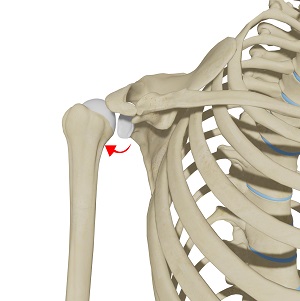
Posterior shoulder instability, also known as posterior glenohumeral instability, is a condition in which the head of the humerus (upper arm bone) dislocates or subluxes posteriorly from the glenoid (socket portion of the shoulder) as a result of significant trauma.
Know More - Anterior Shoulder Instability
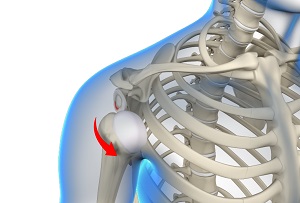
Anterior shoulder instability, also known as anterior glenohumeral instability, is a condition in which damage to the soft tissues or bone causes the head of the humerus (upper arm bone) to dislocate or sublux from the glenoid fossa, compromising the function of the shoulder.
Know More - Proximal Humerus Fractures
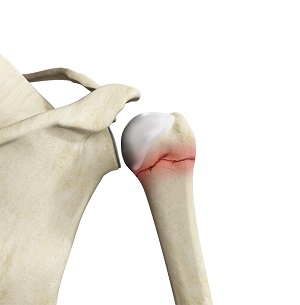
Fractures of the proximal humerus are common in elderly individuals suffering from osteoporosis. In younger individuals, a severe trauma such as a fall from a height on an outstretched hand or motor vehicle accident can cause these fractures.
Know More - AC Joint Separation
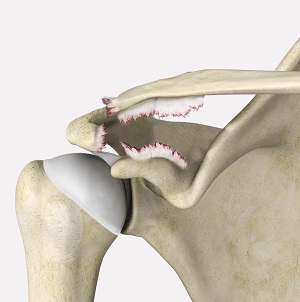
AC joint separation, also known as shoulder separation, is a condition characterized by damage to the ligaments that connect the acromion to the collar bone. As a result, the bones do not line up properly, causing joint pain and instability.
Know More - Throwing Injuries of the Shoulder

Throwing injuries of the shoulder are injuries sustained as a result of trauma by athletes during sports activities that involve repetitive overhand motions of the arm as in baseball, American football, volleyball, rugby, tennis, track and field events, etc.
Know More - Proximal Biceps Tendon Rupture
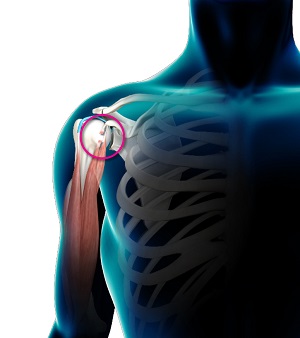
The biceps muscle is the muscle of the upper arm which is necessary for the movement of the shoulder and elbow.
Know More - Long Head Biceps Tendon Rupture
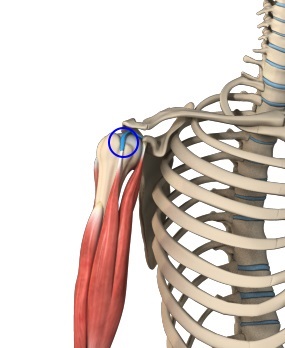
Your biceps muscle has two heads, a long head, and a short head, which are both attached to the shoulder. The long head of the biceps tendon is a tough band of connective fibrous tissue that attaches the long head of the biceps to the top of the shoulder socket.
Know More - Multidirectional Instability of the Shoulder
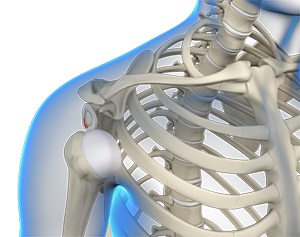
The shoulder consists of a ball and socket joint where the rounded end of the humerus (upper arm bone) fits into a socket (glenoid cavity) formed by the shoulder blade.
Know More - Post-traumatic Stiffness of the Shoulder

Post-traumatic stiffness of the shoulder is the inability of the shoulder joint to move freely due to the damage sustained to the normal gliding surfaces of the shoulder as a result of trauma (injury) or surgery.
Know More - Partial Rotator Cuff Tear
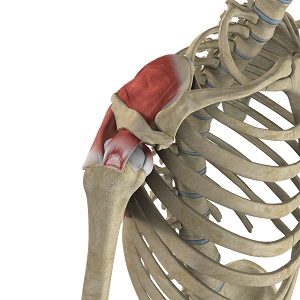
A partial rotator cuff tear is an incomplete tear that involves damage to a part of the tendon. The tear can be at the top, bottom or inner side of the tendon and does not go all the way through the tendon completely.
Know More - Rotator Cuff Calcification
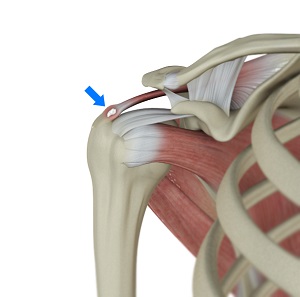
Rotator cuff calcification is the abnormal accumulation of calcium deposits in rotator cuff muscles and tendons.
Know More - Periprosthetic Shoulder Fracture
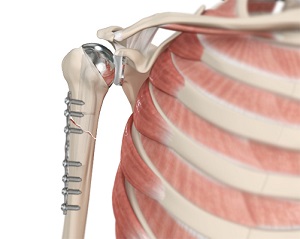
A periprosthetic shoulder fracture is a fracture that occurs in the bone adjacent to a shoulder prosthesis.
Know More - Sternoclavicular Joint Injury
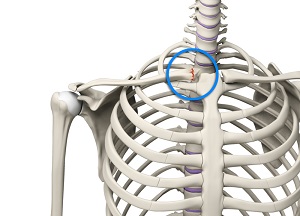
The sternoclavicular joint, commonly called the SC joint, is located between the breastbone (sternum) and the collarbone (clavicle).
Know More
Advent Hospital
